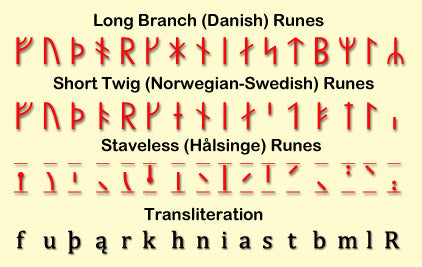Your Cart is Empty
Menu
-
- Shop by Type
- End of Line Sale Items
- New In
- Viking Gifts Under $30
- Hand Forged Axes
- Silver Viking Jewelry
- Stainless Steel Jewelry
- Cremation Jewelry
- Necklaces and Pendants
- Hand Carved Wooden Pendants
- Kings Chains
- Viking Drinking Horns
- Pendant Chains
- Rings
- Bracelets
- Earrings
- Beard Beads and Beard Rings
- Collectables
- Ceramic Mugs
- Street Wear
- Horn Jewelry
- Bronze and Pewter Jewelry
- Shop by Theme
- Viking Axe
- Celtic Jewelry
- Dragon or Serpent
- Viking Raven
- Wolf / Fenrir
- Rune Jewelry
- Odin Jewelry
- Ram / Goat
- Shieldmaidens / Lagertha
- Sword, Spear or Arrow
- Thor's Hammer / Mjolnir
- Tree of Life / Yggdrasil
- Helm of Awe / Aegishjalmur
- Triquetra or Triskelion
- Valknut / Knot of Slain
- Vegvisir / Viking Compass
- Veles / Bear
- Blogs
- Help
-
- Login

Viking and Norse Runes and Their Meanings

We know from interactions with our customers in store, and followers on our Social Media channels, that there are a wide variety of reasons why people are interested in Viking history and mythology. One thing that is pretty much guaranteed to generate comments and questions is anything we post that relates to The Runes. These apparently simple symbols are a source of intrigue and mystery and there are many theories around their origin, use, and meaning.
Legend says that the runes were the original source of fate and emerged from the Well of Urd beneath Yggdrasil the ‘Tree of Life’ and made their way up the trunk and along the branches of the tree to spread into the ‘Nine Worlds’ ( Link to norse-mythology.net for more info )
Such was the fascination and desire to understand the Runes that the God Odin himself hung on the tree for nine days and nights in the belief that he could gain immense wisdom and power if he could unlock the mystery and meaning of the runes. It is widely believed that the runes convey a deep meaning that makes them different to other early examples of written language. This also makes any form of ‘translation’ a challenge as it is not merely a case of matching runes to a corresponding letter of the alphabet we use today as can be done with Greek or Cyrillic alphabets for example.
Rather than being used merely as ‘letters’, runes were used in messages of great importance, on statues of heroes, or on graves of revered ancestors for example. It was widely believed that the ability of the runes to convey deeper meanings facilitated communications between the worlds of the living and of those who had passed. The fact that these messages were usually carved into bone, stone or wood is widely believed to a key reason why their style remained angular and did not evolve into the more rounded appearance of the Roman alphabet we use today.
FUTHARKS
In the same way that the word ‘alphabet’ is derived from the first letters of ancient Greek (alpha and beta), scholars coined the phrase of ‘Futharks’ to describe the Runic alphabet from its initial symbols which are believed to roughly correspond to our sounds of F, U, Th, A, R and K. ‘Elder Futhark’ runes are so named for the amazingly original reason that they are the oldest runic system discovered in Sweden somewhere around the year 400 carved in the ‘Kylver Stone’. (see image below).

It is believed that there are around 50 ‘rune stones’ dating from around the 4th and 5th centuries in both Sweden and Norway.
Elder Futhark is the most widely known rune system consisting of 24 runes. By the time we reach the ‘Viking Age’ (approximately793 – 1066), this system gradually declined in use and the equally aptly named ‘Younger Futhark’ system came into use with a smaller set of only 16 runes.
As the runic systems were becoming more widely used throughout Europe, this new set of fewer runes was being used in a different and more flexible way to be able to differentiate between Norse tongues and those of other Germanic and European tongues.
There were also different styles of Younger Futhark including ‘long branch’ (generally used in Denmark) and ‘short twig’ (more common in Sweden and Norway).

As the levels of trade between nations and peoples increased through the Viking age, the need for writing systems also increased which is believed to be one of the key reasons why there are many thousands of examples of Younger Futhark inscriptions as opposed to a few hundred in Elder Futhark.
Reading the Runes
As mentioned already, for those wishing to use or interpret the runes, things are not always as simple as they seem, but for those who wish to simply transliterate their names or simple epitaphs, the charts below give a basic overview of the most likely and commonly used phonetic translations and interpretations. So, you if you are looking to translate English to ‘Viking’, these are as good a starting point as any.


Although less commonly used in the Viking era, most designs seen on modern day jewelry inspired by the runes use Elder Futhark simply because there is a cleaner and easier translation to English equivalent letters.
CLICK HERE to have a look at some of our popular Rune inspired designs in store.


